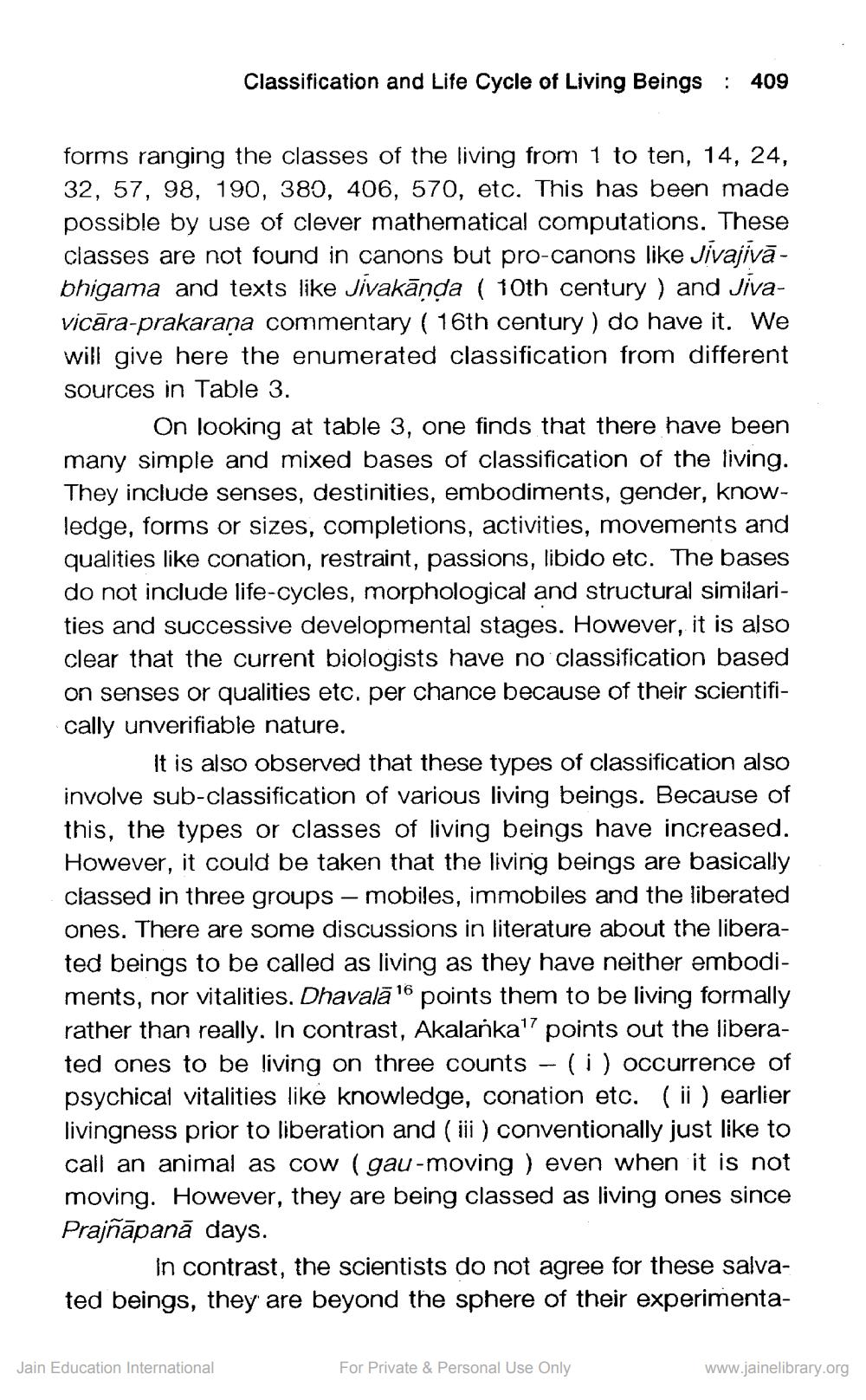________________
Classification and Life Cycle of Living Beings : 409
forms ranging the classes of the living from 1 to ten, 14, 24, 32, 57, 98, 190, 380, 406, 570, etc. This has been made possible by use of clever mathematical computations. These classes are not found in canons but pro-canons like Jivajivābhigama and texts like Jivakānda ( 10th century ) and Jivavicāra-prakarana commentary ( 16th century ) do have it. We will give here the enumerated classification from different sources in Table 3.
On looking at table 3, one finds that there have been many simple and mixed bases of classification of the living. They include senses, destinities, embodiments, gender, knowledge, forms or sizes, completions, activities, movements and qualities like conation, restraint, passions, libido etc. The bases do not include life-cycles, morphological and structural similarities and successive developmental stages. However, it is also clear that the current biologists have no classification based on senses or qualities etc. per chance because of their scientifically unverifiable nature.
It is also observed that these types of classification also involve sub-classification of various living beings. Because of this, the types or classes of living beings have increased. However, it could be taken that the living beings are basically classed in three groups – mobiles, immobiles and the liberated ones. There are some discussions in literature about the liberated beings to be called as living as they have neither embodiments, nor vitalities. Dhavalā 16 points them to be living formally rather than really. In contrast, Akalanka' points out the liberated ones to be living on three counts - ( i ) occurrence of psychical vitalities like knowledge, conation etc. (ii) earlier livingness prior to liberation and (iii) conventionally just like to call an animal as cow (gau-moving ) even when it is not moving. However, they are being classed as living ones since Prajñāpanā days.
In contrast, the scientists do not agree for these salvated beings, they are beyond the sphere of their experimenta
Jain Education International
For Private & Personal Use Only
www.jainelibrary.org




